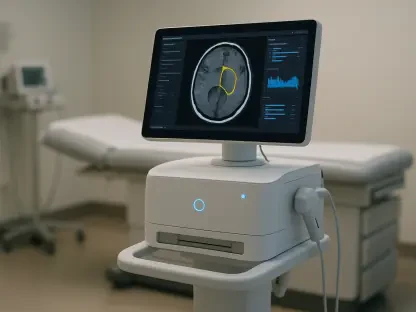The telehealth market is experiencing unprecedented growth, driven by technological advancements and the increasing demand for remote healthcare solutions. By 2030, the market is projected to reach $759.87 billion, with a compound annual growth rate (CAGR) of 38.70% from 2023 to 2030. This rapid expansion is fueled by innovations in Artificial Intelligence (AI), 5G connectivity, and the Internet of Medical Things (IoMT), which are transforming the way healthcare is delivered.
Market Overview
Impact of COVID-19 on Telehealth Adoption
The COVID-19 pandemic has significantly accelerated the adoption of telehealth services worldwide. With social distancing measures and lockdowns in place, healthcare providers and patients turned to virtual consultations and remote patient monitoring (RPM) as safe and effective alternatives to in-person visits. Many healthcare systems implemented these telehealth solutions as a necessity, leading to a significant shift in how care is provided. This shift is expected to have a lasting impact, as consumers and healthcare providers alike have recognized the convenience and efficiency of virtual care. By 2025, it is estimated that approximately 23% of healthcare encounters will occur virtually, demonstrating the profound and enduring influence of the pandemic on the healthcare industry.
Growth Projections and Market Size
The telehealth market is expected to grow at a remarkable pace, driven by several key factors. One of the primary factors contributing to this growth is the increasing prevalence of chronic diseases, which require continuous patient monitoring and management. Remote patient monitoring services offer a solution for managing these chronic conditions effectively, alerting healthcare providers to any concerning changes in a patient’s health status in real time. As a result, the demand for telehealth services is anticipated to increase. Furthermore, the convenience of virtual healthcare services has made them an attractive option for both patients and providers. As the regulatory environment becomes more favorable, with policies supporting telehealth adoption and reimbursement, the market is poised for substantial growth, reaching $759.87 billion by 2030.
Key Market Drivers
Technological Advancements
Innovations in AI, 5G, and IoMT are revolutionizing the telehealth industry. AI-powered diagnostic tools are enhancing the accuracy and efficiency of virtual consultations, providing healthcare providers with powerful new tools to diagnose and treat patients remotely. AI algorithms can analyze vast amounts of patient data, identify patterns, and provide insights that would be difficult or impossible to detect through manual analysis alone. 5G connectivity is another critical advancement, ensuring seamless data transmission and enabling real-time video communication between patients and healthcare providers. This new level of connectivity makes remote consultations nearly as effective as in-person visits. Additionally, IoMT devices, such as wearable health monitors, enable continuous tracking of patient health data, providing healthcare providers with invaluable information to manage chronic conditions proactively.
Regulatory Changes
Government policies and regulatory changes are playing a crucial role in the growth of the telehealth market. Expanded telehealth reimbursement policies ensure that healthcare providers can be fairly compensated for the virtual care they provide, making it easier for practices to adopt telehealth solutions. Reducing licensing barriers across state lines also facilitates the broader implementation of telehealth services. Patients can now receive care from specialists outside their immediate geographic area, expanding access to high-quality healthcare. Initiatives like Medicare expansions have further boosted this trend, making virtual healthcare more accessible to a larger segment of the population. These regulatory changes are encouraging healthcare providers to integrate telehealth into their service offerings, significantly driving market growth.
Chronic Disease Management
The rising prevalence of chronic diseases such as diabetes, hypertension, and heart disease is increasing the demand for RPM services. Telehealth provides an effective solution for continuous monitoring and real-time data analysis, allowing healthcare providers to keep a close eye on their patients’ health without the need for frequent in-person visits. This is particularly beneficial for managing chronic conditions, where early detection of symptoms can lead to timely interventions and prevent complications. Patients with chronic diseases can use wearable devices to monitor vital signs and other health metrics, which are then regularly transmitted to their healthcare providers. This constant stream of information enables providers to deliver personalized care and adjust treatment plans as needed, effectively managing chronic diseases and improving patient outcomes. The increasing focus on chronic disease management through RPM services is expected to be a significant driver for the growth of the telehealth market.
Challenges in the Telehealth Market
Regulatory Complexities
Despite the favorable regulatory changes seen in recent years, the telehealth market still faces challenges related to the varying policies across different regions. Each country, and sometimes even regions within countries, can have different regulations governing telehealth practices. These variations can complicate the implementation and scalability of telehealth services, requiring providers to navigate a complex web of regulations to offer their services across different locations. This regulatory fragmentation poses a barrier to market growth as it can limit the reach and adoption of telehealth services. Furthermore, ensuring compliance with these diverse regulations can be a resource-intensive process for healthcare organizations, potentially slowing down the deployment of telehealth solutions.
Data Privacy Concerns
Data privacy and security are major concerns in the telehealth industry. The digitization of health records and the increase in data transmission over the internet present significant risks for patient data breaches. High-profile data breaches have highlighted the need for stringent compliance with privacy regulations, such as the Health Insurance Portability and Accountability Act (HIPAA) in the United States. Ensuring the confidentiality and security of patient health data is crucial for the widespread adoption of telehealth services. Healthcare providers must invest in robust cybersecurity measures to protect patient data from unauthorized access and attacks. Building trust with patients regarding the safety of their personal health information is essential, and failure to address these concerns could slow the growth of the telehealth market.
Reimbursement Policies
Inconsistent reimbursement rates and incomplete coverage by insurers for remote consultations continue to hinder the adoption of telehealth services. While some insurers have made strides in covering telehealth services, there remains a lack of uniformity in how these services are reimbursed. Such inconsistencies create financial uncertainty for healthcare providers considering telehealth adoption. Addressing these reimbursement challenges is essential for the growth of the telehealth market, as it will encourage more healthcare providers to offer virtual healthcare solutions. Clear and consistent reimbursement policies will enable healthcare providers to integrate telehealth into their care delivery models without financial risk, ultimately facilitating the broader acceptance and utilization of telehealth services across the healthcare industry.
Market Dynamics
Growth Drivers
The telehealth market is driven by several key factors, including technological advancements in AI, 5G, and IoMT, supportive government policies, and the increasing prevalence of chronic diseases. Innovations like AI-powered diagnostic tools are enhancing the capabilities of telehealth services, making them more effective and accessible to a broader range of patients. These technological breakthroughs are enabling healthcare providers to deliver high-quality care remotely, improving patient outcomes and satisfaction. Supportive government policies, such as expanded telehealth reimbursement and reduced licensing barriers, are also encouraging the adoption of telehealth solutions by making them more financially viable for providers and accessible for patients. Additionally, the rising prevalence of chronic diseases requiring continuous monitoring and management is driving demand for telehealth services, further fueling market growth.
Opportunities in Emerging Markets
Emerging markets, such as Asia-Pacific, Latin America, and Africa, present significant growth opportunities for the telehealth industry. The rapid expansion of mobile networks and increasing internet penetration in these regions make it easier to deploy telehealth solutions, reaching populations that previously had limited access to healthcare. The expansion of RPM technologies and virtual therapy services in these regions is expected to drive market growth as these technologies offer practical solutions for healthcare delivery in areas with limited healthcare infrastructure. Moreover, innovations like AI-driven RPM tools and telepsychiatry services offer promising opportunities for the telehealth market, addressing specific healthcare needs more efficiently. These technologies can provide valuable healthcare services to underserved populations while alleviating the burden on overextended healthcare systems.
Restraints
The telehealth market faces several restraints that must be addressed to ensure continued growth and success. Regulatory fragmentation remains a significant challenge, as varying regulations across regions can complicate the implementation and scalability of telehealth services. Data security risks also pose a major concern, requiring investment in robust cybersecurity measures to protect patient information. Additionally, inconsistent reimbursement policies can deter healthcare providers from adopting telehealth solutions, as financial uncertainty may outweigh the perceived benefits. Addressing these issues is crucial for the continued growth of the telehealth industry, as resolving regulatory complexities, enhancing data security, and establishing clear reimbursement policies will provide a more stable foundation for telehealth services to thrive.
Ecosystem Analysis
Healthcare Providers
Hospitals, clinics, physicians, and mental health professionals are among the primary users of telehealth solutions. These providers use telehealth platforms for a variety of purposes, including virtual consultations, remote diagnostics, and managing chronic conditions. The adoption of telehealth by healthcare providers is essential for the market’s growth, as it allows them to extend their reach to patients who may not be able to visit in person due to geographic, health, or time constraints. Telehealth platforms enable healthcare providers to offer timely and efficient care, improving patient access and satisfaction. Furthermore, telehealth allows healthcare providers to optimize their workflows, reducing the burden on physical facilities and enabling providers to see more patients in less time.
Payers
Insurance companies and government health programs play a critical role in telehealth adoption through their reimbursement models and policies. Expanded coverage by insurers is expected to increase demand for virtual healthcare services, as it provides financial incentives for healthcare providers to offer telehealth solutions. By adopting favorable reimbursement policies, payers can help drive the growth of telehealth services, making them a more attractive option for both providers and patients. Government health programs, such as Medicare in the United States, also have a significant impact, as their policies and reimbursement rates set the standard for other payers to follow. Supporting telehealth adoption through reimbursement models can help reduce healthcare costs, improve access to care, and enhance health outcomes.
Technology Companies
Technology companies, such as Teladoc and Amwell, play a pivotal role in the telehealth market. These companies provide the digital platforms, software, and medical devices necessary for telehealth services. The development of user-friendly telehealth platforms that offer seamless video conferencing, secure data transmission, and integration with electronic health records (EHR) systems is essential for the success of telehealth solutions. Startups like MD Integrations and Gemedico are also contributing to the market by bringing innovative solutions to address specific needs in the telehealth ecosystem, such as AI-driven diagnostic tools and wearable health monitors. The collaboration between technology companies and healthcare providers is crucial for delivering effective telehealth services and driving market growth.
Future Considerations
Addressing Data Privacy and Security
A key focus for the telehealth market going forward is addressing data privacy and security concerns. Ensuring patient data is protected from cyber threats is vital for maintaining trust and encouraging the adoption of telehealth services. Healthcare providers will need to invest in robust cybersecurity solutions and adhere to stringent privacy regulations, such as HIPAA, to safeguard sensitive patient information. Developing comprehensive security protocols and educating healthcare professionals about best practices for data protection will be critical in mitigating privacy risks and ensuring the safe use of telehealth technologies.
Bridging the Digital Divide
Another important consideration for the future of the telehealth market is bridging the digital divide. Ensuring equitable access to telehealth services for all populations, including rural and underserved communities, is essential for the market’s growth and success. This will involve improving internet access and digital literacy, as well as providing affordable telehealth solutions and devices. Public and private sector partnerships can play a significant role in addressing these challenges, promoting digital inclusion, and expanding the reach of telehealth services to those who need them most.
Expanding Service Offerings
As competition in the telehealth market intensifies, companies will need to differentiate themselves by expanding their service offerings and enhancing patient engagement. Incorporating advanced technologies, such as AI-driven predictive analytics, virtual reality (VR) for mental health therapy, and personalized health monitoring tools, can help companies stand out in the market. Additionally, focusing on patient-centric care and improving the overall telehealth experience can lead to greater patient satisfaction and increased adoption of virtual healthcare services. By continuously innovating and expanding their service offerings, telehealth companies can remain competitive and meet the evolving needs of patients and healthcare providers.
Partnering Across the Healthcare Ecosystem
Building strong partnerships across the healthcare ecosystem will be critical for the continued growth and success of the telehealth market. Collaboration between telehealth companies, healthcare providers, insurance companies, pharmaceutical firms, and technology developers can lead to the creation of comprehensive and integrated telehealth solutions. These partnerships can help streamline workflows, improve care coordination, and enhance the overall quality of healthcare services. By working together, stakeholders in the telehealth ecosystem can address common challenges, share expertise, and drive innovation in the telehealth market.
Conclusion
The telehealth market is witnessing remarkable growth, propelled by cutting-edge technology and the ever-growing demand for remote healthcare services. Forecasts suggest that by 2030, this market will soar to $759.87 billion, reflecting a compound annual growth rate (CAGR) of 38.70% from 2023 to 2030. This extraordinary expansion is largely driven by advancements in key technologies such as Artificial Intelligence (AI), 5G connectivity, and the Internet of Medical Things (IoMT). These innovations are revolutionizing healthcare delivery by making it more accessible, efficient, and effective.
AI is playing a significant role in telehealth by providing advanced diagnostic tools, personalized treatment plans, and predictive analytics to foresee health issues before they become severe. Meanwhile, 5G technology enhances real-time communication between patients and healthcare providers, ensuring seamless and high-quality virtual consultations. The IoMT includes a network of connected medical devices that collect and transmit health data, enabling continuous monitoring and better patient outcomes.
As the telehealth landscape evolves, these technological advancements will continue to redefine how healthcare services are provided, ensuring more people have access to high-quality care regardless of their geographic location. This trend not only addresses current healthcare challenges but also paves the way for a more connected and efficient healthcare system in the future.









